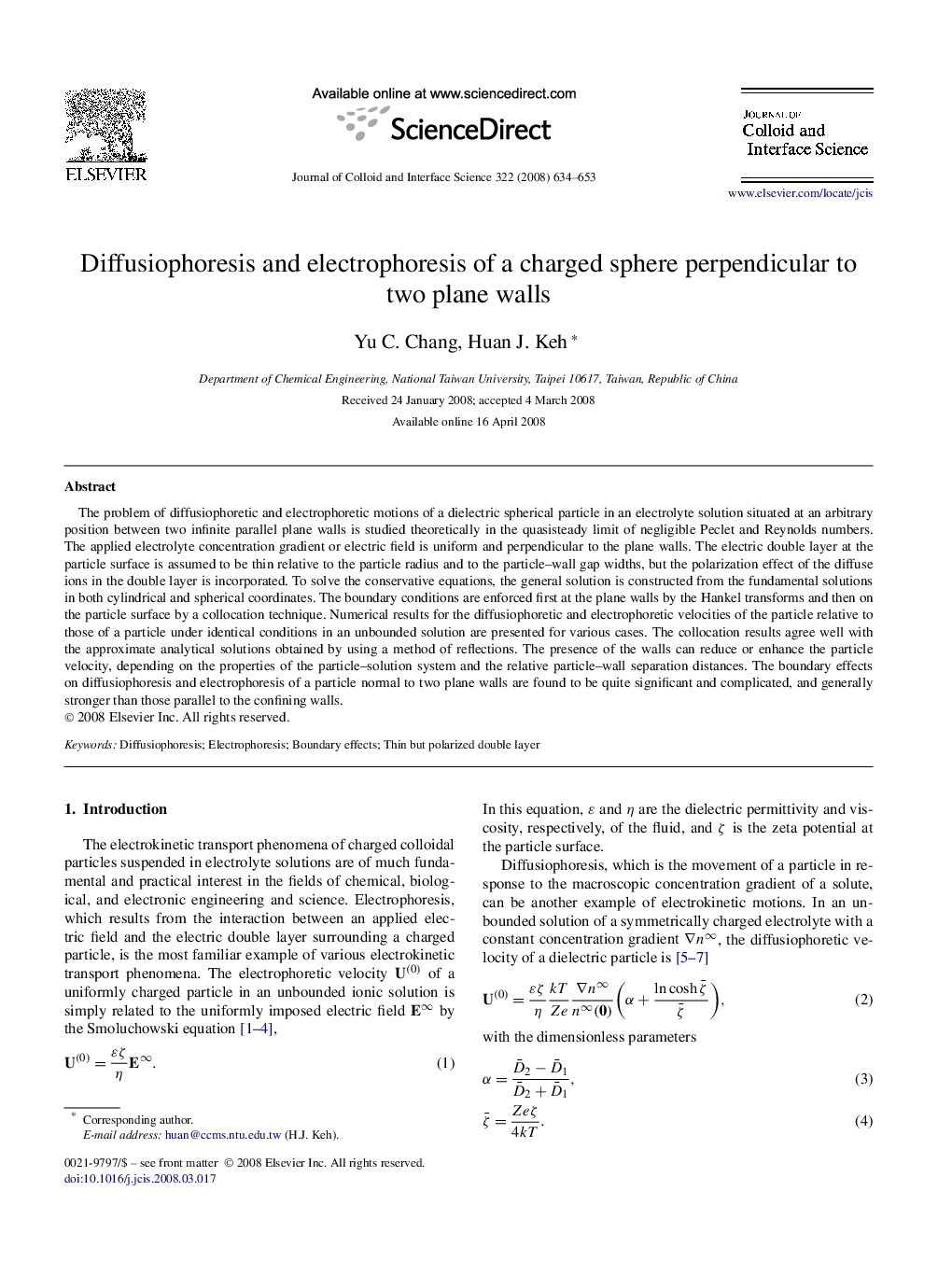| Article ID | Journal | Published Year | Pages | File Type |
|---|---|---|---|---|
| 611852 | Journal of Colloid and Interface Science | 2008 | 20 Pages |
The problem of diffusiophoretic and electrophoretic motions of a dielectric spherical particle in an electrolyte solution situated at an arbitrary position between two infinite parallel plane walls is studied theoretically in the quasisteady limit of negligible Peclet and Reynolds numbers. The applied electrolyte concentration gradient or electric field is uniform and perpendicular to the plane walls. The electric double layer at the particle surface is assumed to be thin relative to the particle radius and to the particle–wall gap widths, but the polarization effect of the diffuse ions in the double layer is incorporated. To solve the conservative equations, the general solution is constructed from the fundamental solutions in both cylindrical and spherical coordinates. The boundary conditions are enforced first at the plane walls by the Hankel transforms and then on the particle surface by a collocation technique. Numerical results for the diffusiophoretic and electrophoretic velocities of the particle relative to those of a particle under identical conditions in an unbounded solution are presented for various cases. The collocation results agree well with the approximate analytical solutions obtained by using a method of reflections. The presence of the walls can reduce or enhance the particle velocity, depending on the properties of the particle–solution system and the relative particle–wall separation distances. The boundary effects on diffusiophoresis and electrophoresis of a particle normal to two plane walls are found to be quite significant and complicated, and generally stronger than those parallel to the confining walls.
Graphical abstractThe problem of diffusiophoretic and electrophoretic motions of a dielectric spherical particle with a thin but polarized electric double layer in an electrolyte solution perpendicular to two parallel plane walls at an arbitrary position between them is studied theoretically.Figure optionsDownload full-size imageDownload as PowerPoint slide
